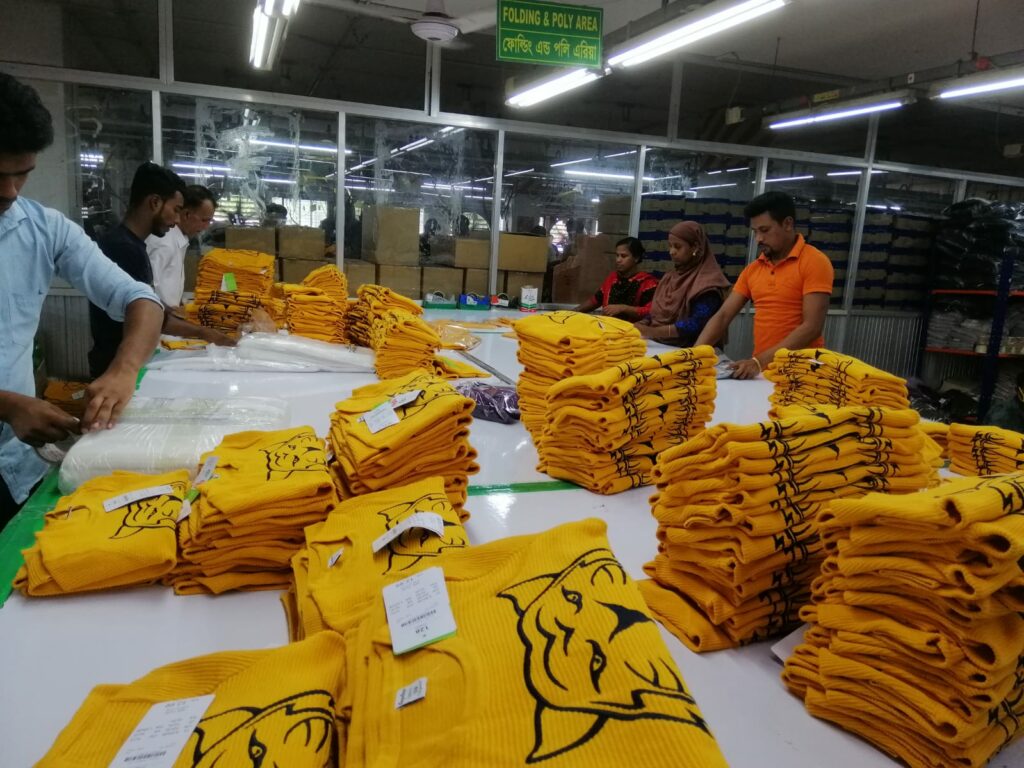The garment industry in Bangladesh has experienced tremendous growth over the past few decades, making it a vital contributor to the country’s economy. This blog will explore the evolution of the Bangladesh garment industry, highlighting its journey from humble beginnings to becoming one of the world’s largest apparel exporters. We will also shed light on the challenges faced by the industry and the steps taken to address them.

- The Rise of the Bangladesh Garment Industry:
The history of Bangladesh’s garment industry dates back to the late 1970s when the country began to capitalize on its low labor costs and favorable geographical location. Initially, the industry started with a few small-scale factories catering to local demand. However, with the liberalization of trade policies and the emergence of global supply chains, Bangladesh quickly became an attractive destination for international apparel manufacturers.
- Factors Driving Growth:
Several factors contributed to the rapid growth of Bangladesh’s garment industry. First and foremost, the availability of a large, low-cost labor force played a significant role. Additionally, the government’s proactive policies and incentives for foreign investment, along with favorable trade agreements with major economies, boosted the industry’s development.
- Economic Impact:
The garment industry has played a pivotal role in transforming Bangladesh’s economy. It has become the country’s largest export earner, accounting for a substantial portion of its GDP. The industry has created millions of jobs, particularly for women, empowering them financially and socially. Furthermore, the influx of foreign direct investment (FDI) in the sector has contributed to infrastructure development and technological advancements.
- Labor and Working Conditions:
While the growth of the garment industry has undeniably brought economic benefits, it has also faced significant challenges regarding labor and working conditions. The industry has been criticized for issues such as low wages, long working hours, inadequate safety measures, and limited workers’ rights. Tragic incidents like the Rana Plaza collapse in 2013 highlighted the need for improved workplace safety and labor standards.
- Industry Reforms and Initiatives:
In response to the challenges faced, Bangladesh has taken significant steps to address the issues in its garment industry. Collaborative efforts between the government, international organizations, and local stakeholders have led to the implementation of stricter safety regulations, enhanced labor standards, and increased transparency. Organizations like the Alliance for Bangladesh Worker Safety and the Accord on Fire and Building Safety have played vital roles in driving positive change.
- Sustainable Practices and Future Outlook:
Sustainability has become a growing focus for the garment industry globally, and Bangladesh is no exception. Manufacturers are adopting eco-friendly practices, emphasizing resource efficiency, waste reduction, and ethical sourcing. The industry is embracing innovation and technological advancements to improve productivity and enhance sustainability.
Conclusion:
The Bangladesh garment industry’s journey from humble beginnings to becoming a global apparel manufacturing hub is a testament to the country’s resilience and determination. While it has faced challenges, significant progress has been made in improving labor conditions and safety standards. As the industry continues to evolve, sustainable practices and ethical considerations will be crucial for long-term success. With the right measures in place, Bangladesh’s garment industry has the potential to lead the way in both economic growth and responsible manufacturing practices.

